With so much emphasis on health and where our food comes from , there has never been a better time to encourage children to grow their own healthy food , avoid harmful pesticides and fertilisers whilst learning about the beauty of nature.
Growing your own food is a great way to save money and reduce your carbon footprint, but it's also a wonderful bonding experience for families. Kids love getting their hands dirty and watching things grow, and gardening together can provide a fun and rewarding activity that everyone can enjoy.
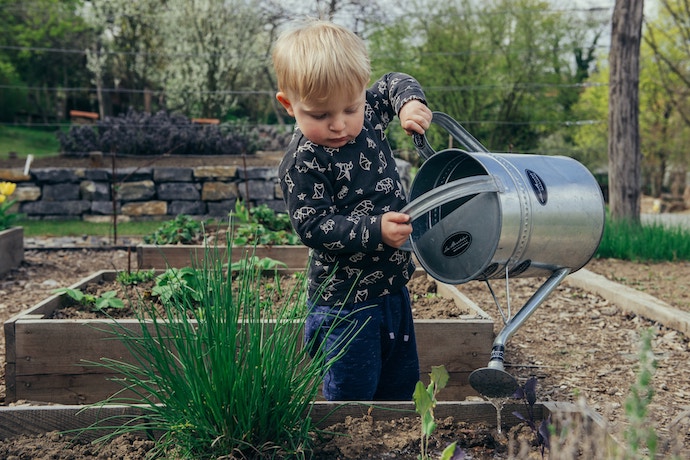
Photo by Filip Urban on Unsplash
Here are some tips and ideas to help you start your own family garden and enjoy the benefits of fresh, homegrown produce.
Kit them out
Part of the fun can be kitting out the little ones in thier very own gardening clothes. You can very cheaply assemble a set of gardening tools for them , including gardening gloves, gardening sets with tools and even their own plant pots, that they could brightly paint. There are also lots of great gardening for kids books and kits that help them understand everything from wildflower growing to spotting to what type of bug is on their plants.
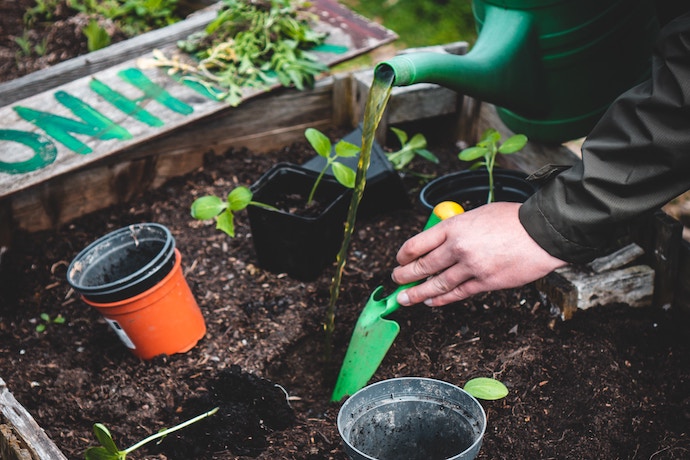
Photo by Jonathan Kemper on Unsplash
Choose the right plants
When selecting the plants for your garden, make sure to consider your location, soil type, and climate. Choose plants that are suitable for your area, and that your kids will enjoy eating. Start with easy-to-grow crops like lettuce, tomatoes, cucumbers, and carrots. You can also plant herbs like basil, parsley, and thyme, which are easy to maintain and add flavour to your dishes.
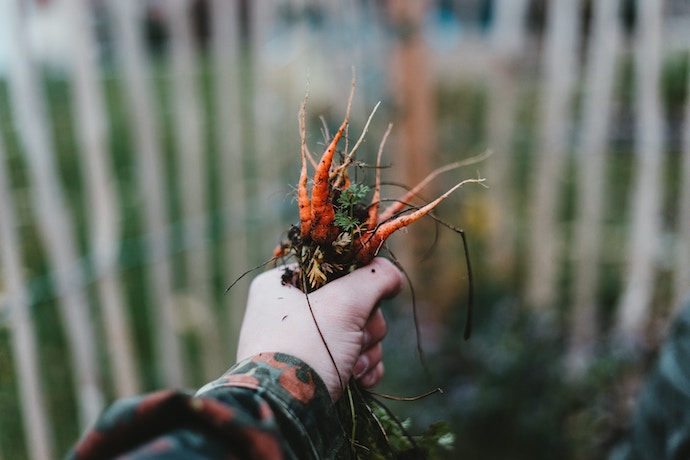
Photo by Julian Hochgesang on Unsplash
Involve your kids
Get your kids involved in the gardening process from the very beginning. Let them help you pick out the plants and seeds, and show them how to sow and care for them. Assign them tasks like watering, weeding, and harvesting, so they feel like they are contributing to the process. This will give them a sense of ownership and responsibility, and make them more likely to enjoy the fruits of their labor.
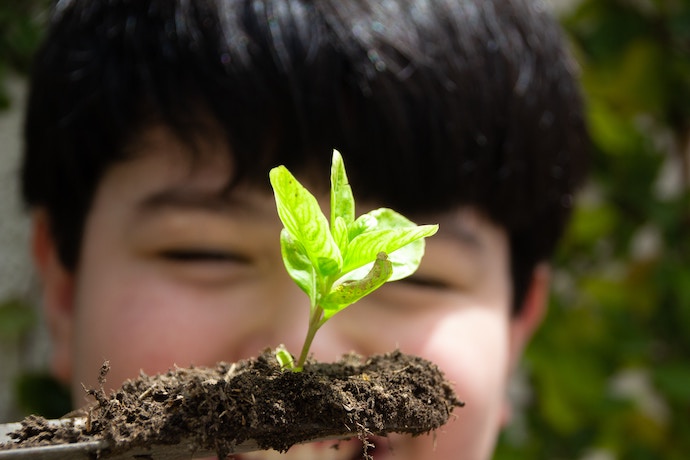
Make it fun
Gardening can be a fun and educational activity for kids of all ages. Encourage your kids to get creative by decorating their own plant markers or making their own compost. You can also turn your garden into a scavenger hunt by hiding clues or treasures among the plants. Use the time in the garden to teach your kids about insects, pollination, and the environment. Let them explore and discover the wonders of nature.
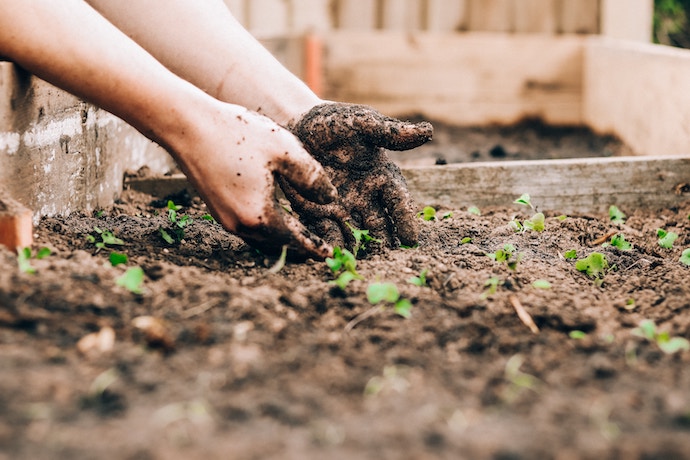
Photo by Sandie Clarke on Unsplash
Enjoy the rewards
Once your plants start to grow, it's time to enjoy the fruits of your labor. Involve your kids in the harvesting process and use the produce to make meals together. You can also donate some of the excess produce to a local food bank or share it with neighbours and friends. This will teach your kids about giving back to the community and the value of sharing. It's a lovely feeling to visit your neighbors with a box of home-grown veg that they can also enjoy. Also there is plenty of opportunity to store food with pickling or preserving ,so it lasts into the winter .
FAQ - Gardening with the kids
Growing fruit and vegetables with children is a fantastic way to spend quality time together, while also teaching them about nature, healthy eating, and sustainability. But what age should you start including your little ones in the gardening process? In fact, children can start gardening at any age! Even toddlers can help with some simple tasks, such as watering plants, picking ripe berries, or planting seeds in pots. As they grow up, you can involve them in more complex activities, such as preparing soil, weeding, or pruning. The key is to make gardening a fun and engaging experience for your kids. Encourage them to explore the garden, ask questions, and discover new things. Show them how to take care of plants, and explain why it's important to do so. Let them taste fresh herbs and vegetables straight from the garden, and get excited about the harvest. To start with, you can try some easy projects that are perfect for beginners. For example, you could plant some herbs in a window box, or grow some beans in a jar. You could also create a mini garden using a shoebox, or build a bug hotel with recycled materials. These activities are simple, low-cost, and require minimal space or equipment. As your children become more confident and interested in gardening, you can move on to more ambitious projects. You could set up a raised bed for vegetables, or plant a fruit tree that will bear fruit for years to come. You could also involve them in designing the garden layout. What are the best types of plants for kids to grow in their garden? Growing fruits and vegetables with your kids is an amazing way to bond with them and teach them about healthy eating habits. Plus, it's a fun and interactive way to get them outdoors and away from screens! But, what are the best types of plants for kids to grow in their garden? Here are some ideas: 1. Radishes - Radishes are one of the easiest vegetables to grow and they mature quickly, making them a great choice for kids. Plus, they come in a variety of colours, so your kids can have fun choosing which ones to plant. 2. Strawberries - Kids love strawberries! They are a sweet and healthy snack, and they are also easy to grow. Just make sure to plant them in a sunny spot and keep them well-watered. 3. Cherry Tomatoes - Cherry tomatoes are another easy-to-grow option that kids will love. They are small and sweet, and perfect for snacking on right off the vine. 4. Sunflowers - Sunflowers are a great option for kids who want to grow something big and impressive. They are easy to grow from seeds and can reach heights of up to 10 feet tall! 5. Carrots - Carrots are a bit trickier to grow than some of the other options on this list, but they are still a great choice for kids. They come in a variety of colours and are a fun way to teach your kids about where their food comes from. No matter what you choose to plant with your kids,make sure to involve them in every step of the process. From selecting the seeds to preparing the soil and watering the plants, let them take ownership of their garden. This will not only make them feel proud of their work, but it will also teach them responsibility and patience. In addition to the physical and educational benefits of gardening, it can also be a great bonding experience for families. Spending time together outdoors, working towards a common goal, and watching your hard work pay off in the form of fresh produce can create memories that your kids will cherish for years to come. So, what are you waiting for? Grab some seeds, soil, and a few gardening tools, and get ready to have some fun with your kids! Whether you have a small balcony or a big backyard, there's always room for a little greenery in your life. Not only will you be teaching your kids valuable life skills, but you'll also be creating a healthier and happier home environment. Green thumbs up to kids gardening!
Do you want to get your kids outside and active while also teaching them about where their food comes from? Gardening is the perfect solution! Not only is it a fun and educational activity, but it's also a fantastic way to bond with your children. Here are some tips on how to encourage your children to participate in gardening: 1. Make it Fun: Children are more likely to engage in an activity if it's fun. Make gardening exciting by involving your children in the decision-making process on what to grow, letting them get their hands dirty, and even turning it into a game or competition. 2. Start Small: Don't overwhelm your children with a massive garden right off the bat. Start small with a few easy-to-grow plants that your children will enjoy, such as strawberries or cherry tomatoes. 3. Get Creative: Gardening doesn't have to be limited to traditional beds. Have fun with it and get creative. Try planting herbs in a window box or using old containers as planters. 4. Show, Don't Tell: Children are visual learners, so show them how to garden by doing it with them. Explain why certain plants need more sun or water and how they grow. Make it an educational experience. 5. Celebrate the Harvest: The best part of gardening is the harvest. Celebrate the fruits (and vegetables) of your labor by having a big family feast with the produce you grew together. Incorporating gardening into your family's routine is a wonderful way to teach your kids valuable life skills while also having fun together. By following these tips, you can encourage your children to discover the joys of gardening and create lasting memories that they'll cherish for years to come. Happy gardening!
Growing fruit and vegetables with your children can be a fun and rewarding experience, but it's important to keep safety in mind. Here are a few precautions to take when gardening with kids: 1. Choose age-appropriate tools: Make sure your children are using tools that are safe and appropriate for their age. This might mean using plastic or lightweight tools for younger children, or supervising older children when they use sharp tools like pruning shears. 2. Teach proper hand washing: Gardening can be messy, and it's important to make sure your children are washing their hands thoroughly after handling soil, plants, or tools. You might even want to invest in a child-friendly hand sanitiser that you can use when you're outside. 3. Use organic or natural fertilisers: If you're using fertilisers or pesticides in your garden, be sure to choose natural or organic products that are safe for your children to be around. 4. Keep an eye out for hazards: Before you start gardening, take a quick scan of the area to make sure there are no hazards like broken glass or sharp objects that could harm your children. 5. Supervise your children: Finally, make sure you're always supervising your children when they're gardening. This is a great opportunity to teach them about safety and responsibility, and to bond over a shared activity. So get out there, have some fun, and grow some delicious fruits and vegetables with your little ones!
If you're planning to introduce your kids to gardening, you may be wondering what type of tools are best for them to use. The good news is that there are plenty of tools specifically designed for children that are safe and easy to use. Here are a few options to consider: 1. Trowel: A small trowel is a must-have tool for any young gardener. Look for one with a wooden or plastic handle and a metal blade that's sturdy but not too sharp. 2. Watering can: Kids love watering plants, so invest in a small watering can that's easy for little hands to hold and pour. 3. Gloves: Gardening gloves can protect little hands from thorns and prickly plants. Look for ones that are made of a lightweight and breathable material. 4. Pruners: Depending on your child's age and experience level, you may want to invest in a pair of kids' pruners. These are smaller than adult pruners and have safety features to prevent accidental cuts. 5. Rake: A small plastic or wooden rake is a great tool for kids to use to help smooth out soil and remove debris. Remember, safety should always come first when it comes to gardening with kids. Always supervise your children when they're using tools and make sure they know how to use them properly. With the right tools and a little guidance, your kids will be on their way to becoming expert gardeners in no time!
Growing fruit and vegetables with children is not only a fun bonding experience, but it's also a great way to teach kids about the importance of sustainable gardening. By involving your kids in the process of growing their own food, you can help them understand the value of sustainable gardening practices. One way to teach kids about sustainable gardening is to explain the importance of using organic gardening methods. You can show them how to use natural pest control methods like companion planting, using organic fertilisers, and composting to create nutrient-rich soil. Explain to them how these methods are better for the environment and how they help to reduce the use of harmful chemicals. Another great way to teach kids about sustainable gardening is to focus on water conservation. Explain to them the importance of conserving water and show them how to use drip irrigation systems or rain barrels to collect and conserve water. Teach them how to water their plants in the morning or evening when it's cooler to reduce water evaporation. Lastly, involve your kids in recycling and composting. Show them how to compost food scraps and yard waste to create nutrient-rich soil for their plants. Teach them about the importance of recycling and reducing waste by using recycled materials for planting and gardening. By involving your kids in sustainable gardening practices, you can teach them how to be environmentally conscious while having fun growing their own food. Not only will they learn valuable skills, but they will also develop a sense of responsibility and respect for the environment. So, get outdoors and start growing some delicious and healthy fruits and vegetables with your kids today!
Gardening with kids is not only a fun way to bond, but it's also a great opportunity to teach them about nature and the different insects that play a part in the growth of fruits and vegetables. While there are a variety of insects that kids may come across when gardening, some of the most common ones include ladybugs, butterflies, bees, and earthworms. Ladybugs, also known as ladybirds, are popular among kids because of their bright colors and spots. They are great to have in the garden because they eat harmful insects that can damage plants. Butterflies are also a common sight in gardens, and kids can learn about the different types and stages of their life cycle. Bees, on the other hand, play a crucial role in pollinating flowers and allowing plants to bear fruit. They are important for the growth of fruits and vegetables, and kids can observe them in action as they collect nectar and pollen. Lastly, earthworms are essential for healthy soil as they help to break down organic matter and improve soil structure. Kids can learn about the importance of composting and how earthworms play a part in the process. Encountering these insects while gardening can be a fun and educational experience for kids, and it can help to develop their appreciation for nature and the environment. To make the most out of gardening with kids, try choosing easy-to-grow plants like cherry tomatoes, strawberries, or herbs. These plants are low maintenance and can be grown in containers or small plots of land. Cherry tomatoes are especially fun for kids to pick and eat straight from the vine. Herbs like basil or mint can also be used in cooking or making homemade teas. Another fun project is growing pumpkins or watermelons, which can be harvested and carved or enjoyed as a refreshing summer treat. In addition to the fun of growing their own food, kids can also learn about healthy eating habits and the benefits of a balanced diet. When kids are involved in the process of growing and harvesting their own fruits and vegetables, they are more likely to try new foods and appreciate the taste of fresh, home-grown produce. It's a win-win situation for both parents and kids. So, grab your gardening gloves and get ready to dig in the dirt with your kids. Not only will you create lasting memories and strengthen your bond, but you'll also be teaching your kids valuable life skills and fostering a love for nature and the environment. Happy gardening!
Winter is an excellent time to teach your children how to care for their garden, and it's a great activity to keep them busy during the colder months. Here are a few tips on how to help children care for their garden over the winter: 1. Cover the plants: During the colder months, it's important to protect your garden from frost and snow. You can cover your plants with a layer of mulch, straw, or old leaves. This will help keep the soil warm and prevent the plants from freezing. 2. Water the plants: Even though it's cold outside, your plants still need water. Make sure to water them regularly, but don't overwater, as this can cause damage to the plants. 3. Prune the plants: Winter is a great time to prune your plants. This will help them grow stronger and healthier in the spring. 4. Keep the garden clean: It's important to keep your garden clean during the winter months. Remove any dead leaves or debris that may have fallen on the ground. This will help prevent pests and diseases from spreading. 5. Educate your children: Use this time to teach your children about the different types of plants and how they grow. Encourage them to ask questions and get involved in the care of their garden. This will help them develop a love for gardening and nature. Overall, caring for a garden over the winter is a great way to teach your children about responsibility, patience, and the beauty of nature. So, don't let the colder weather stop you and your green-thumbed kids from enjoying the benefits of gardening all year round!
So what are some great gardening projects for families to try? Here are a few ideas to get you started:
Grow a salad garden
Let your kids pick out their favourite salad greens and veggies to plant and watch them grow. It's a great way to get them excited about healthy eating. Salad is super easy to grow and can be a great entry to learning about the growing process. It will also teach kids patience , as they will need to understand that things dont happen overnight. With children being so used to immediate gratification with video games and other modern pursuits, going back to basics can be a great way to clam them down.
Photo by Kenan Kitchen on Unsplash
Start a herb garden
Herbs are easy to grow and can add flavour to all your meals. Let your kids choose their favourites to plant and teach them how to use them in cooking. You don't need a lot of space and these can even be grown indoors. All you need is a few pots , some cheap seeds, soil and a little time. Herbs grow fairly quickly , so even the most impatient child will enjoy the process.
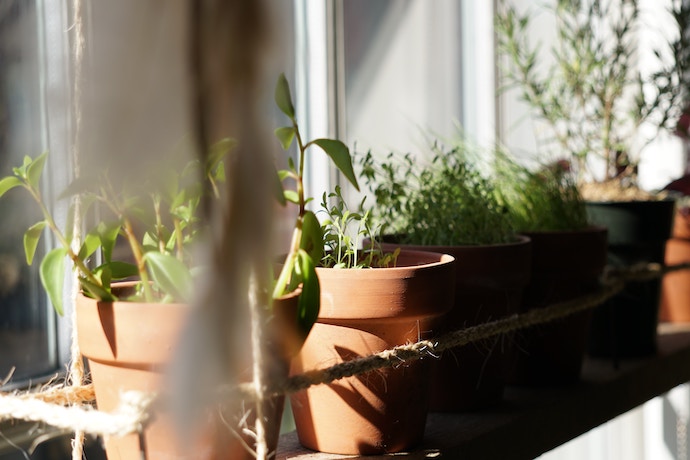
Plant a pizza garden
Who doesn't love pizza? Planting a garden with tomatoes, peppers, onions, and herbs like basil and oregano can provide all the ingredients you need to make a delicious homemade pizza. There is nothing more fulfilling than taking the vegetables you have gown together and creating an incredible meal to enjoy together aroung the family table. See them beam with pride and further learn the value of home grown food.

No matter what you decide to plant, gardening with your kids is a wonderful way to spend time together and create lasting memories. Give it a try this summer and see how much fun you can have while also teaching your kids valuable life skills.
In addition to providing a fun bonding experience, gardening can also teach kids responsibility, patience, and the importance of taking care of the environment. By caring for their own plants, kids can learn about the process of growth and development, as well as the impact of weather, pests, and other factors on the health of their plants.
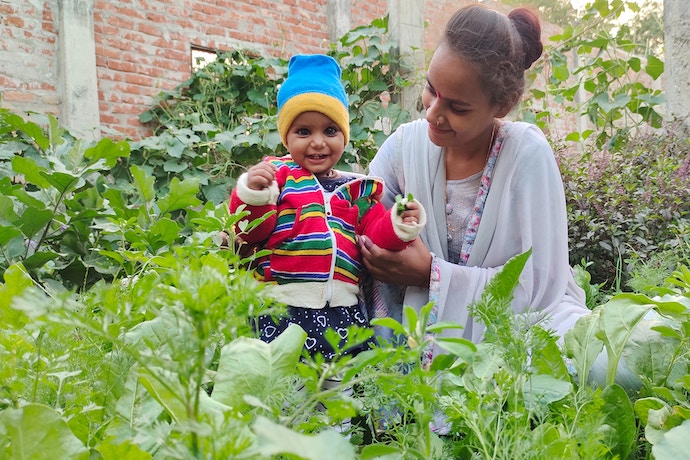
Photo by Surya Prakash on Unsplash
Gardening can also be a great way to encourage healthy eating habits. When kids are involved in the process of growing their own fruits and vegetables, they're more likely to try them and appreciate the taste of fresh, natural foods.
So why not get started on your own family garden today? All you need is a little bit of space, some soil, and some seeds or seedlings. You can even get creative and repurpose old containers, like buckets or tires, to use as planters.
And don't worry if you don't have a green thumb – gardening is a learning process and a great opportunity for both parents and kids to learn together. So grab some tools, get outside, and start growing your own food. It's a fun and rewarding experience that your whole family can enjoy!
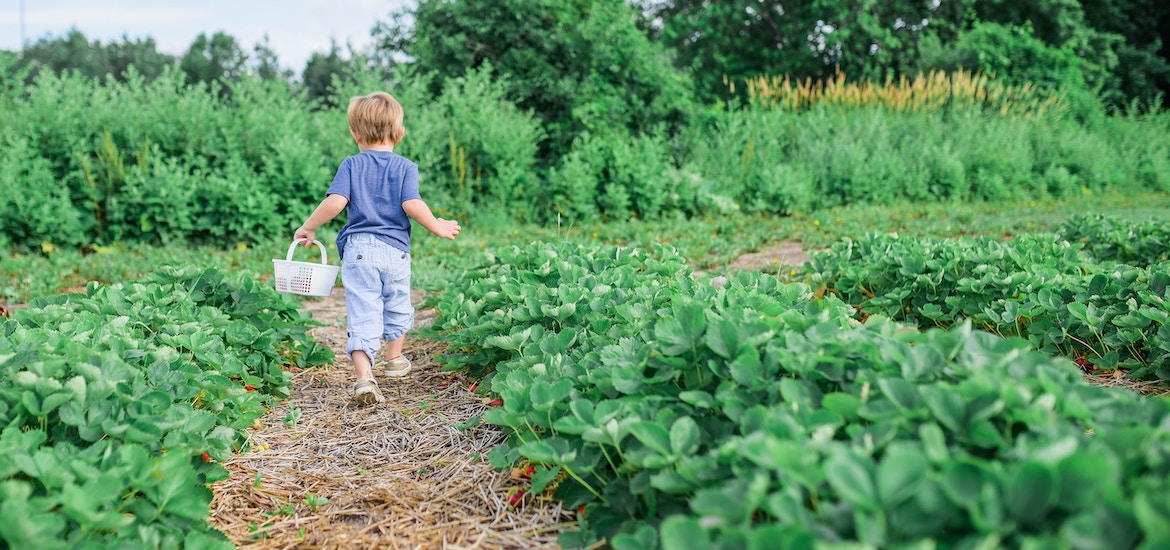
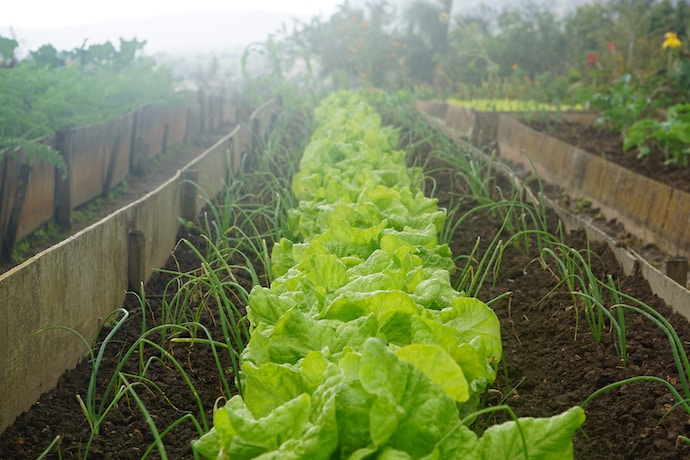














AshleyPugh ;
Ashley Pugh is one of the Co-Founders of Familydaysout.com and has been committed to writing family related content since 2008. There isn't much about family attractions that Ashley doesn't know, after visiting hundreds of them worldwide over the last 20 years.
Leave a comment